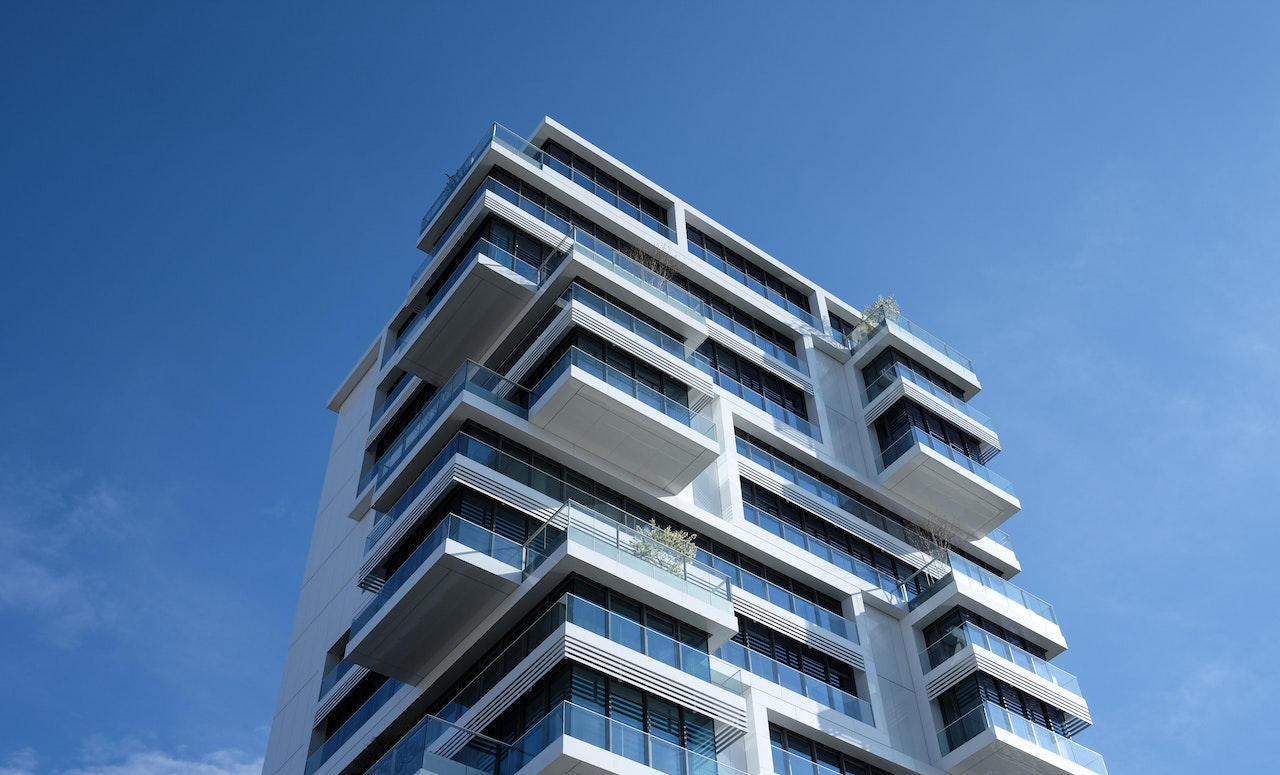The Role Of Architecture In Promoting Economic Growth And Development - Building For Prosperity
The role of architecture in promoting economic growth and development is higher in many countries. It is a key factor that drives economic progress by creating a conducive environment for businesses to thrive.
Author:George EvansMar 12, 202314.4K Shares688.7K Views

The role of architecture in promoting economic growth and developmentis higher in many countries. It is a key factor that drives economic progress by creating a conducive environment for businesses to thrive.
The design and construction of buildings, public spaces, and infrastructure have a direct impact on economic activities, as they affect the productivity and efficiency of individuals, businesses, and communities.
How The Economy Affects Architecture
The relationship between the economy and architecture is complex and multifaceted. Architecture is both an outcome and a driver of economic development, and the two are interdependent.
Economic factors have a profound impact on architectural design and construction practices, and in turn, architecture can contribute to the economic development of a region.
Economic factors shape the demand for architecture. The demand for new buildings, infrastructure, and urban spaces is driven by economic growth and population growth.
As the economy expands, businesses need more space, and new commercial and residential developments are required.
Economic downturns, on the other hand, can lead to a decrease in demand for new buildings and renovations, as businesses and individuals tighten their belts. In a recession, architecture firms may struggle to find new clients, and construction activity may slow down significantly.
Economic factors also influence the materials and construction methods used in architecture. The cost of materials and labor can have a significant impact on the design and construction of buildings.
During periods of economic growth, when labor and materials are in high demand, architects may need to find creative solutions to reduce costs while maintaining quality.
Conversely, during an economic downturn, construction companies may have to cut corners to keep costs down, leading to lower-quality buildings.
Another way in which the economy affects architecture is through government policies and regulations. Economic policies, such as tax incentives and subsidies, can incentivize developers and businesses to invest in certain types of architecture or construction practices.
For example, tax credits for the renovation of historic buildings can encourage the preservation of historic architecture.
On the other hand, policies that restrict development or impose onerous regulations on construction can stifle architectural innovation and lead to a decline in the quality of buildings.
Importance Of Building Economics In Architecture
Building economics is a critical aspect of architecture, as it involves the financial planning, budgeting, and management of construction projects.
Understanding building economics is essential for architects, as it enables them to design buildings that are not only aesthetically pleasing but also financially feasible.
Firstly, building economics is essential for architects to ensure that their designs are financially feasible. Architects must consider the cost of materials, labor, and other resources when designing a building.
They must work within the budget constraints of the project while still creating a design that meets the client's requirements. Without a solid understanding of building economics, architects may create designs that are impractical or unaffordable.
Secondly, building economics helps architects to optimize their designs. By considering the costs of various materials and construction methods, architects can make informed decisions about the design and construction of a building.
For example, they may choose to use less expensive but equally effective materials, or they may adopt more efficient construction methods to reduce labor costs. By optimizing their designs, architects can create buildings that are both beautiful and cost-effective.
The Role Of Architecture In Promoting Economic Growth And Development - Architecture And Economics Degree
Architecture and economics are two distinct fields that have much in common. Both fields are concerned with the creation of value, albeit in different ways.
Architecture is concerned with creating value through the design and construction of buildings, while economics is concerned with creating value through the efficient allocation of resources.
An architecture and economics degree can provide students with a unique set of skills that are highly sought after in the job market.
An architecture and economics degree program is typically designed to provide students with a broad-based education in both fields. Students will learn about architectural design principles, construction methods, and project management, as well as economic theories, financial management, and market analysis. By combining these two fields, students can develop a comprehensive understanding of the economic and financial factors that influence architectural design and construction.
One of the key benefits of an architecture and economics degree is the ability to apply economic principles to architectural design.
For example, an understanding of supply and demand can help architects to design buildings that are not only aesthetically pleasing but also financially viable.
By taking into account market demand and the costs of construction, architects can create designs that meet both the client's requirements and the budget constraints of the project.
Another benefit of an architecture and economics degree is the ability to apply architectural principles to economic analysis.
For example, an understanding of building design and construction methods can help economists to evaluate the costs and benefits of infrastructure projects.
By considering the long-term impacts of infrastructure investments, economists can help policymakers to make informed decisions about public spending.

Economic Development – Growth and Development I A Level and IB Economics
Socio-Economic Architecture
Socio-economic architecture is a discipline that combines the principles of architecture and economics to create buildings and spaces that promote social and economic development.
This approach to architecture recognizes the importance of architecture in shaping society and aims to create spaces that are both aesthetically pleasing and socially and economically beneficial.
Socio-economic architecture is concerned with the relationship between the built environment and social and economic development.
This includes issues such as housing affordability, public space design, and the impact of the built environment on economic activity.
Architects who specialize in socio-economic architecture work to create buildings and spaces that are accessible to all, promote community engagement, and foster economic growth.
One of the key principles of socio-economic architecture is the idea of inclusivity. Socio-economic architects aim to create spaces that are accessible to all members of society, regardless of income, race, or ability.
This includes designing buildings and public spaces that are wheelchair accessible, creating affordable housing options, and ensuring that public spaces are safe and welcoming for all members of the community.
Another key principle of socio-economic architecture is the idea of community engagement. Socio-economic architects work closely with local communities to understand their needs and priorities, and to create buildings and spaces that reflect these values.
This may include designing community centers, public parks, and other spaces that promote social interaction and community engagement.
People Also Ask
What Are Some Examples Of How Architecture Can Promote Economic Development?
Architecture can promote economic development by creating iconic buildings and structures that attract tourists, fostering innovation through research and development centers, and designing mixed-use spaces that encourage small business growth and entrepreneurship.
How Can Urban Planning And Architecture Promote Economic Growth?
Urban planningand architecture can promote economic growth by designing mixed-use spaces that encourage pedestrian activity, fostering green spaces that promote health and wellness and developing infrastructure that supports transportation and logistics.
What Are Some Ways Architecture Can Promote Sustainable Economic Development?
Architecture can promote sustainable economic development by designing energy-efficient buildings that reduce carbon emissions and utility costs, integrating renewable energy sources, and using sustainable materials in construction.
How Can Architectural Design Support Community Economic Development?
Architectural design can support community economic development by creating vibrant public spaces that attract visitors and residents, designing affordable housing that supports workforce development, and fostering mixed-use spaces that support small businesses.
What Is The Role Of Architecture In Promoting Economic Development In Developing Countries?
The role of architecture in promoting economic developmentin developing countries is to design sustainable and affordable housing, infrastructure, and public spaces that support economic growth, enhance social mobility, and reduce poverty.
How Does Architecture Promote Job Creation?
Architecture promotes job creation by providing opportunities for architects, builders, and construction workers, and creating new business opportunities for small businesses in related industries.
Conclusion
The role of architecture in promoting economic growth and development cannot be overstated. It is a critical component of any economic development strategy, and its impact can be felt across various sectors of the economy.
Good architectural design can attract businesses and investors, create jobs, and stimulate economic activities. It can also enhance the livability of cities and towns, making them more attractive to residents and tourists.
Therefore, policymakers, architects, and other stakeholders must work together to harness the full potential of architecture in promoting economic growth and development.

George Evans
Author
George Anderson, an exceptional architectural designer, envisions and brings to life structures that transcend the realm of imagination. With an unwavering passion for design and an innate eye for detail, George seamlessly blends form and function, creating immersive spaces that inspire awe.
Driven by a deep appreciation for the interplay of space, light, and materials, George's innovative approach redefines the possibilities of architectural design. His visionary compositions leave an indelible mark, evoking a sense of wonder and transforming the built environment.
George Anderson's transformative designs and unwavering dedication continue to shape the architectural landscape, pushing the boundaries of what is possible and inspiring generations to come.
Latest Articles
Popular Articles
